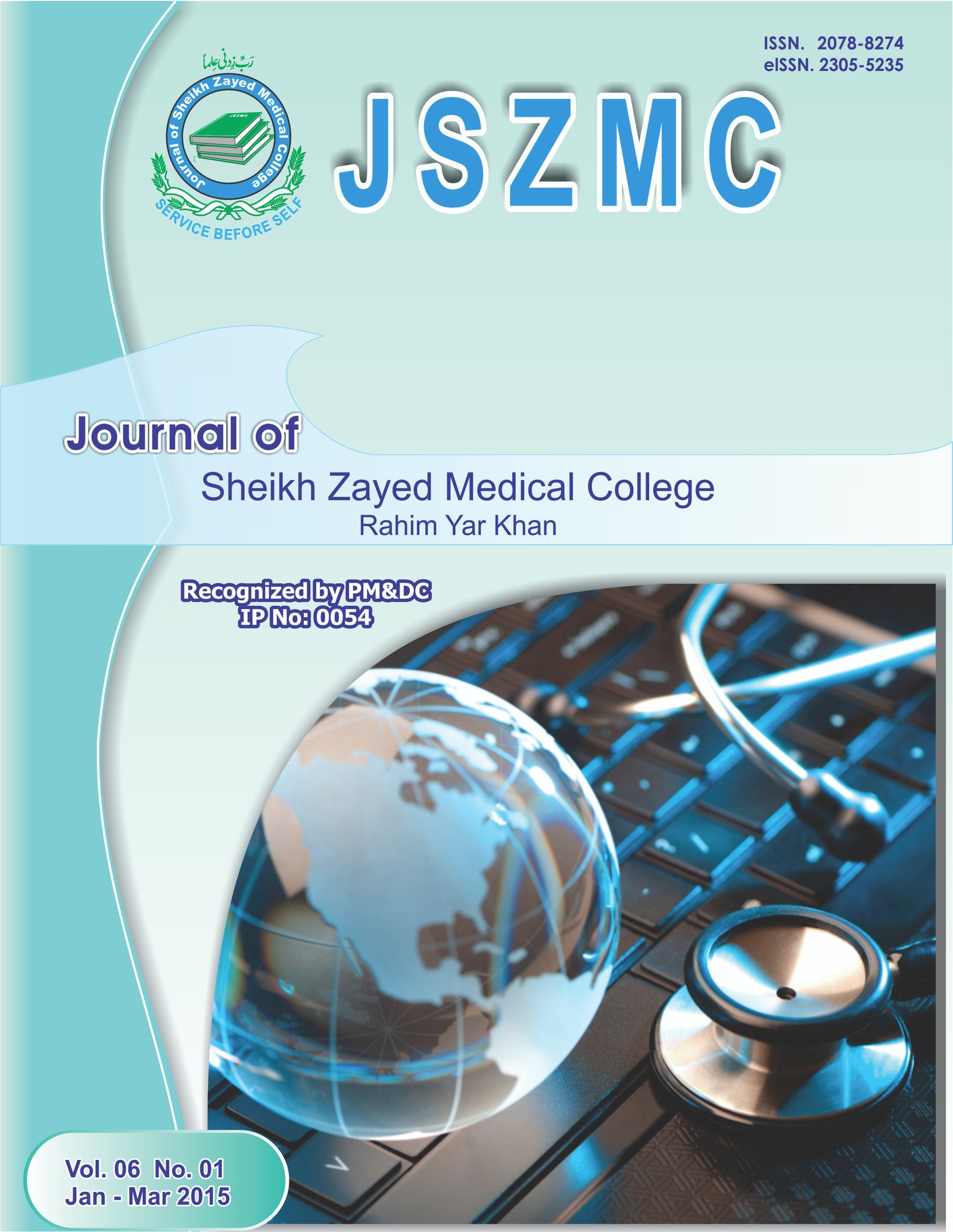Post mydriasis rise in intraoccular pressure with tropicamide in normal individuals, glaucoma cases with and without rapid progression
Keywords:
Glaucoma, Glaucoma suspect, Intraocular pressure, Mydriasis.Abstract
Background: Rise in intraoccular pressure (IOP) may have significant effects on optic disc. Objective: To compare postmydriasis rise in intraoccular pressure with tropicamide in normal individuals and glaucoma cases with or without rapid
progression. Subjects and Methods: Study design: Quasi-experimental. Sampling Technique: Non-Randomized, consecutive
sampling. This study was performed on 116 eyes of 116 patients reporting at Eye Department, Combined Military Hospital
st th (CMH), Lahore from 1 August 2012 to 30 April 2013. They were assigned to three groups based on their glaucoma profile:
Group A: Normal subjects without raised IOPor glaucomatous visual field loss. Group B: Diagnosed cases of glaucoma without
significant visual field defect progression. Group C: Diagnosed cases of glaucoma with significant visual field defect progression
over last two years. SPSS version 16 Software was used for statistical analysis to compare intra-ocular pressure changes postmydriasis in the three groups. Results: IOPrise post-mydriasis was low (1.89 mmhg) in normal individuals whereas the spike was
statistically significant in glaucoma patients (5.88 mmHg). Diagnosed cases of glaucoma with worst prognosis has a relatively
higher IOP spike (10.6 mmhg) as compared to those with slower visual field defects (5.88 mmhg) progression.(p<0.05).
Conclusion: Our study showed a significant rise in IOPin glaucoma patients with and without rapid progression as compared to
normal subjects. Post-mydriasis IOP spike is a reliable diagnostic and prognostic provocative test for glaucoma suspects and
diagnosed cases. However, the negative effects of raised IOPon an already compromised optic nerve head must be kept in mind.


